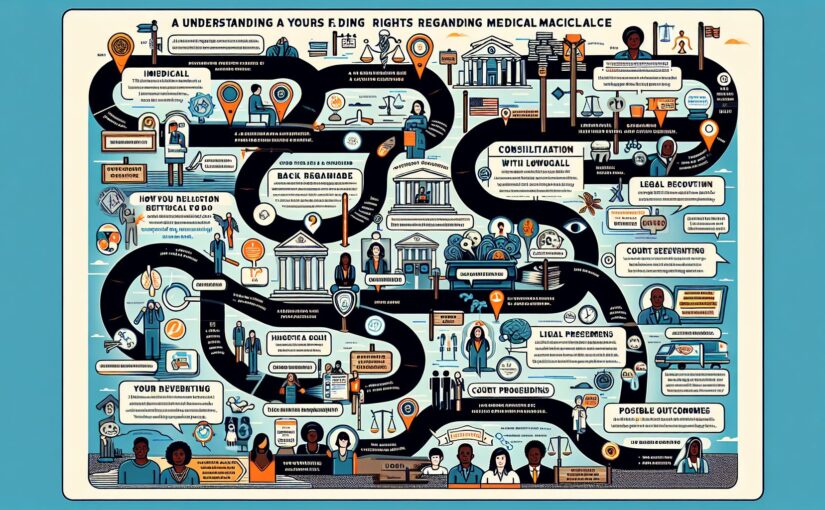Welcome to our blog series on building community health and wellness. In this series, we will explore the importance of healthcare initiatives, public health programs, and community wellness strategies in fostering a healthier and stronger community. Nonprofit organizations play a vital role in promoting community health through various social wellness programs.
These programs focus on bringing people together and promoting positive relationships. Examples of nonprofit social wellness programs include workshops, connection-building cultural activities, fitness programs, hobby groups, relationship therapy, and client appreciation. These initiatives aim to improve social wellness, support healthy habits, and reinforce positive behaviors within the community.
Join us as we delve into the world of community health and explore the impactful initiatives that make a difference in people’s lives. Together, let’s build a healthier future for our community.
Nonprofit Social Wellness Programs
Nonprofit organizations play a significant role in promoting community health through the implementation of various social wellness programs. These programs are designed to align with the core values and mission of the organization, focusing on enhancing social connections, improving overall well-being, and fostering positive relationships within the community.
Workshops for Stress Reduction and Self-Care
One example of a social wellness program offered by nonprofit organizations is workshops that focus on stress reduction and self-care. These workshops provide valuable tools and techniques for individuals to manage stress, improve their mental health, and prioritize self-care practices.
Connection-Building Cultural Activities
Nonprofit organizations also organize connection-building cultural activities to promote positive relationships. Activities like healthy cooking classes and art programming bring community members together, fostering a sense of unity and shared experiences.
Fitness Programs for Community Engagement
Fitness programs, such as walking groups and yoga classes, are another way nonprofit organizations promote community health. These programs encourage individuals to engage in physical activity, improving their physical fitness while also providing opportunities for social interaction and community engagement.
Hobby Groups for Community Engagement
Nonprofit organizations often create hobby groups that allow individuals to connect with others who share similar interests. These groups promote community engagement and provide a supportive environment for individuals to explore their hobbies and passions.
Relationship Therapy and Client Appreciation Initiatives
In addition to the above programs, nonprofit organizations may offer relationship therapy services to support positive relationships within the community. They may also create client appreciation initiatives to show gratitude to individuals who utilize their services, fostering a sense of appreciation and well-being.
The Impact of Social Wellness Programs
Measuring the impact of social wellness programs can be challenging, as not all outcomes can be quantified. However, nonprofit organizations can utilize flexible case management software to track and analyze program outcomes. This helps determine program strengths and identify gaps in service delivery. By humanizing data, organizations can better understand the impact of their initiatives and make informed decisions to optimize community wellness and social wellness programs.
Nonprofit initiatives focused on social wellness programs play a crucial role in enhancing community health and well-being. These programs aim to improve social connections, support healthy habits, and reinforce positive behaviors within the community. However, evaluating the effectiveness of these programs can be complex due to the nuanced nature of the outcomes. While certain outcomes, such as participation rates and user satisfaction, can be easily quantified, other outcomes, such as improved mental well-being or increased feelings of connectedness, may require more qualitative assessment.
Flexible case management software offers a solution to this challenge. It allows nonprofit organizations to systematically track and analyze program outcomes, providing valuable insights into program effectiveness. By utilizing this software, organizations can collect data on various program parameters, such as attendance, program completion rates, and qualitative feedback from participants. The software also enables organizations to identify trends and patterns in the data, helping them gain a comprehensive understanding of the impact of their initiatives.
Through outcomes tracking, organizations can identify program strengths and areas that require improvement. This information allows them to make data-driven decisions to optimize program delivery and address any gaps in service provision. By leveraging the power of flexible case management software, nonprofit organizations can enhance the impact of their social wellness programs, ultimately improving community wellness and well-being.
Promoting Physical Activity for Community Health
Physical activity is essential for maintaining community health and preventing chronic conditions. Inactive lifestyles and poor nutrition contribute to unhealthy populations with an increased risk of chronic diseases and higher stress levels. To address these issues, public health programs should prioritize strategies that promote physical activity within the community.
One effective strategy is to create activity-friendly routes that encourage walking and biking. By designing pathways that connect popular destinations, individuals are more likely to incorporate physical activity into their daily routines. Investing in infrastructure that supports safe and accessible physical activity can greatly benefit the community.
Developing health and exercise initiatives at schools is another impactful approach to promoting physical activity. By incorporating physical education classes, recess breaks, and extracurricular activities that encourage movement, children have more opportunities to engage in regular exercise. These initiatives not only support physical health but also contribute to improved cognitive function and overall well-being.
Establishing community gardens is another effective way to promote physical activity and healthy eating habits. Community members can actively participate in planting, tending to the garden, and harvesting fresh produce. This fosters a sense of community engagement while also providing access to nutritious food options.
Promoting physical activity requires collaboration from multiple sectors within the community. Parks and recreation departments can play a significant role in maintaining and developing activity spaces. Law enforcement agencies contribute by creating safe environments for outdoor physical activities, ensuring individuals feel secure while exercising. Public transportation can also contribute by implementing infrastructure that encourages walking and biking, making it easier for community members to incorporate physical activity into their daily commute.
Schools, employers, and healthcare providers are also important stakeholders in promoting physical activity. Schools should provide physical education classes and have access to sports facilities that encourage active lifestyles. Employers can support community health by offering wellness programs and incentives for employees to engage in physical activity. Healthcare providers play a crucial role in advising individuals on the importance of physical activity for preventing chronic conditions and maintaining overall health.
The Benefits of Physical Activity
Regular physical activity offers numerous benefits for preventing and managing chronic conditions. Engaging in regular physical activity improves overall health, fitness, and well-being. It can improve heart health, reduce pain caused by arthritis, help manage diabetes, potentially reduce the frequency of asthma attacks, alleviate back pain, lower the risks of cognitive impairment and dementia, and enhance muscular strength and cognitive function.
Physical activity plays a vital role in preventing chronic conditions such as heart disease, arthritis, diabetes, asthma, back pain, and dementia. By incorporating regular exercise into your routine, you can reduce the risk of these conditions and improve your overall quality of life.
Physical Activity Guidelines for Different Age Groups
When it comes to physical activity, different age groups have specific guidelines to ensure they stay healthy and active. Whether you’re an older adult, an adult, or a child, incorporating aerobic activity and muscle-strengthening activities into your routine is essential for maintaining overall wellness.
Older Adults:
For older adults, it’s recommended to engage in at least 150 minutes of moderate aerobic activity each week. This can include brisk walking, swimming, or cycling. Additionally, balance training exercises and muscle-strengthening activities, such as lifting weights or using resistance bands, should be incorporated into their routine to maintain strength and flexibility.
Adults 18+:
Adults aged 18 and above should aim for the same recommended aerobic activity as older adults. This can be achieved by engaging in activities like jogging, dancing, or playing a sport. Along with aerobic activity, adults should also include muscle-strengthening activities, such as push-ups, sit-ups, or yoga, to improve muscular strength and endurance.
Kids and Teenagers:
Children and teenagers should strive to accumulate at least 60 minutes of physical activity each day. This includes activities that strengthen their muscles and bones, such as running, jumping, or playing sports. Encouraging them to participate in organized sports teams or engaging in active play with friends can help them meet these guidelines and promote a healthy lifestyle from an early age.
Even preschool-aged children can benefit from regular physical activity throughout the day, which can be achieved through unstructured play, dancing, or simple games. It’s important to provide them with a variety of movement opportunities to support their physical development.
By following these physical activity guidelines, individuals of all ages can maintain their health, improve their fitness levels, and enjoy the many benefits that an active lifestyle brings.
Involving Multiple Sectors for Community Health
Improving community health requires collaboration and contribution from multiple sectors within the community. By working together, sectors such as parks and recreation, law enforcement, public transportation, schools, employers, and healthcare can promote physical activity and create a healthier environment.
Parks and recreation departments play a crucial role in maintaining and developing activity spaces within the community. These spaces, such as parks, trails, and sports facilities, provide opportunities for individuals to engage in physical activity and improve their overall well-being.
Law enforcement agencies also have a part to play in promoting community health. By creating safe neighborhoods and ensuring public safety, law enforcement contributes to making outdoor physical activities more accessible and enjoyable for everyone.
Public transportation systems can have a significant impact on community health as well. By implementing better infrastructure, such as bike lanes and pedestrian-friendly routes, public transportation can encourage walking, biking, and other active modes of transportation, ultimately increasing physical activity levels.
Schools have a unique opportunity to promote community health through physical education and sports facilities. By providing quality physical education programs and access to sports facilities, schools can instill healthy habits in students from a young age and empower them to lead active lives.
Employers also have a role to play in supporting community health. By incentivizing physical activity and implementing workplace wellness programs, employers can create a culture of health and well-being among their employees. This can include offering exercise programs, promoting active commuting, and providing facilities for physical activity.
Lastly, healthcare providers play a crucial role in advising individuals on physical activity recommendations and the benefits of an active lifestyle. By understanding the unique healthcare needs of their patients, healthcare providers can guide them towards appropriate physical activity programs and support community-wide health initiatives.
By involving multiple sectors within the community, we can create a comprehensive approach to community health that addresses physical activity, safety, accessibility, education, and support. Together, these collaborative efforts can make a significant impact on the overall well-being and health of the community.

- Parks and recreation departments provide activity spaces
- Law enforcement agencies create safe neighborhoods for outdoor activities
- Public transportation promotes walking and biking through better infrastructure
- Schools offer physical education and sports facilities
- Employers incentivize physical activity and provide exercise programs
- Healthcare providers advise on physical activity recommendations
Strategies to Increase Physical Activity in the Community
Increasing physical activity levels within a community is key to promoting community health and wellness. By implementing various strategies, communities can create an environment that encourages and supports regular physical activity. Here are some effective strategies to consider:
- Designing activity-friendly routes: Creating pathways and routes that connect popular destinations and make walking and biking easier can encourage community members to incorporate physical activity into their daily routines. These routes can be designed to be visually appealing, safe, and accessible to people of all ages and abilities.
- Developing health initiatives: Schools play a crucial role in promoting physical activity among children and teenagers. By implementing health initiatives that include physical education classes, after-school sports programs, and active recess periods, schools can provide opportunities for students to engage in regular physical activity.
- Promoting community gardens: Establishing community gardens not only encourages healthy eating but also provides an opportunity for physical exercise and social interaction. Community members can come together to cultivate and maintain the gardens, fostering a sense of community while promoting physical activity.
By implementing these strategies, communities can foster a culture of physical activity, improving overall community health and well-being. It’s essential to involve multiple sectors within the community, such as schools, local government, and community organizations, in the planning and execution of these initiatives to ensure their success.
Shaping Healthy Habits for Children
As a parent, your everyday behavior plays a significant role in shaping your child’s behavior and habits. By modeling healthy eating and physical activity, you can help your child develop lifelong healthy habits.
One important aspect of shaping healthy habits for children is providing nutrition education. Teaching them about the importance of a balanced diet at home and school can contribute to improved community health. Encourage your child to make healthier choices by involving them in meal planning and preparation. Discuss the benefits of nutritious foods, such as fruits, vegetables, whole grains, and lean proteins. By instilling this knowledge, you can empower your child to make informed decisions about their diet.
Another key factor in developing healthy habits is encouraging physical activity. Physical activity not only benefits children’s physical health but also supports their cognitive development and emotional well-being. Provide opportunities for your child to engage in active play, such as sports, dancing, or bike riding. Limit their screen time and encourage outdoor activities that promote movement and exploration.
By incorporating regular exercise into your family’s routine, you can foster a positive attitude towards physical activity. Join your child in fun activities like playing catch, going for walks, or having dance-offs together. Showing enthusiasm and enjoying these activities together can create lasting memories while instilling a love for physical activity in your child.
To reinforce healthy habits, it’s crucial to create an environment that supports your child’s well-being. Stock your pantry and refrigerator with nutritious snacks and beverages, making it easier for your child to make healthy choices. Provide ample opportunities for physical activity, such as setting up a play area or organizing family outings to parks or playgrounds.
Remember, your role as a parent in shaping healthy habits goes beyond just educating and encouraging. Be a positive role model by demonstrating healthy behaviors yourself. Your child looks up to you and learns by emulating your actions. By taking care of your own health and prioritizing your well-being, you not only set a great example but also reinforce the importance of self-care and healthy living.
The Importance of Community Support
Apart from parental influence, community support plays a crucial role in shaping healthy habits. Friends, teachers, and community members can influence a child’s behavior through their actions and choices. Creating a supportive community environment that values and promotes healthy habits can positively impact the overall health and wellness of individuals and the community as a whole.
Building Healthy Relationships
Building strong relationships within the community fosters an environment of support and encouragement. When community members prioritize healthy habits, such as regular exercise and nutritious eating, it creates a culture where these behaviors are celebrated and reinforced.
By participating in community events and engaging in group activities, individuals can inspire others to adopt healthy habits. This social influence promotes a sense of responsibility towards personal well-being and encourages the collective adoption of healthier lifestyles.
Positive Role Models
Community members who demonstrate healthy habits serve as role models for others, especially children and teenagers. When young individuals observe positive behaviors such as regular exercise, balanced nutrition, and self-care practices, they are more likely to emulate these habits in their own lives.
By fostering an inclusive and supportive community environment, individuals have the opportunity to inspire and influence others towards healthy choices. Whether it’s through sharing healthy recipes, organizing fitness challenges, or offering guidance on stress management techniques, community support plays a significant role in shaping and reinforcing healthy habits.

Community support is vital in promoting and sustaining healthy habits within a population. The image above represents a diverse group of individuals engaging in outdoor activities, highlighting the importance of inclusive community participation in cultivating healthier lifestyles.
Collaborative Efforts
Community support can be further strengthened through collaborative efforts among local organizations, schools, and healthcare providers. By working together, these stakeholders can develop and implement programs that promote healthy habits and provide resources to support individuals in making positive lifestyle changes.
Engaging local leaders and influencers in health and wellness initiatives can also amplify the reach and impact of community support. These individuals can use their platforms to raise awareness, educate the community about the benefits of healthy habits, and encourage participation in various wellness activities.
Creating a Supportive Network
Community support is not limited to individuals alone. Schools, workplaces, and other community institutions also play a crucial role in cultivating healthy habits. By providing resources and fostering environments that prioritize well-being, these institutions create a foundation for individuals to develop and maintain healthy habits.
Through collaborative events, workshops, and educational programs, community organizations can empower individuals to take charge of their health and well-being. By supporting and encouraging one another, individuals in the community can overcome barriers and sustain healthy habits, ultimately contributing to a healthier and more vibrant community.
Sustainability and Community Wellness
Building community health and wellness is a long-term endeavor that requires sustainable efforts. By implementing sustainable initiatives and programs, communities can ensure long-lasting positive impacts on community health. This can involve collaborating with various stakeholders, utilizing resources efficiently, and continuously evaluating and adapting strategies to meet the evolving needs of the community.
Sustainability is the key to creating a lasting impact on community wellness. It involves taking a holistic approach to address the social, economic, and environmental factors that influence the well-being of individuals and the community as a whole. Sustainable initiatives focus on long-term solutions rather than quick fixes, ensuring that the progress made is maintained and built upon over time.
One way to promote sustainability in community wellness is through effective collaboration with various stakeholders. This includes government agencies, nonprofit organizations, businesses, educational institutions, healthcare providers, and community members. By working together, these stakeholders can leverage their expertise, resources, and networks to develop comprehensive and impactful programs that address the unique needs of the community.
Utilizing resources efficiently is another crucial aspect of sustainability. This involves making the most of available resources while minimizing waste and negative impacts on the environment. By optimizing resource allocation, communities can maximize the reach and effectiveness of their wellness initiatives, ensuring that more individuals can benefit from the programs.
Continuous evaluation and adaptation of strategies are essential to ensure the long-term impact of community wellness programs. This involves collecting and analyzing data to assess the effectiveness of initiatives, identifying areas for improvement, and making necessary adjustments to better meet the evolving needs of the community. By incorporating feedback from participants and stakeholders, communities can ensure that their wellness programs remain relevant, impactful, and sustainable.
In conclusion, sustainability plays a crucial role in building and maintaining community wellness. By implementing sustainable initiatives, collaborating with stakeholders, utilizing resources efficiently, and continuously evaluating and adapting strategies, communities can create a long-lasting positive impact on the health and well-being of their residents. By prioritizing sustainability in community wellness efforts, we can work together to create healthier and thriving communities for generations to come.
Conclusion
Building community health and fostering wellness is a collaborative effort that involves nonprofit organizations, community sectors, parents, and community members. By implementing social wellness programs, promoting physical activity, shaping healthy habits, and creating a supportive community environment, we can collectively work towards improving population health and overall well-being.
Sustainable initiatives are key to ensuring the long-term success of community health and wellness efforts. By implementing environmentally conscious practices and resource-efficient strategies, we can create lasting positive impacts on community health. Additionally, community partnerships are vital for sharing resources, expertise, and support, enabling us to build healthier and stronger communities.
Together, let’s continue to prioritize community health and wellness. By harnessing the power of collaboration, implementing sustainable initiatives, and fostering community partnerships, we can create a future where everyone has the opportunity to thrive.






